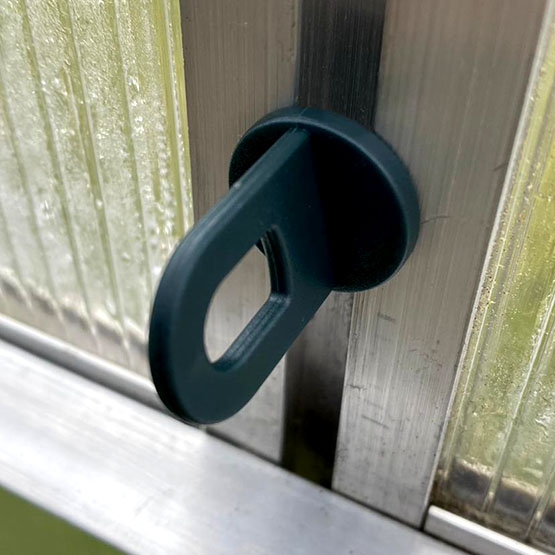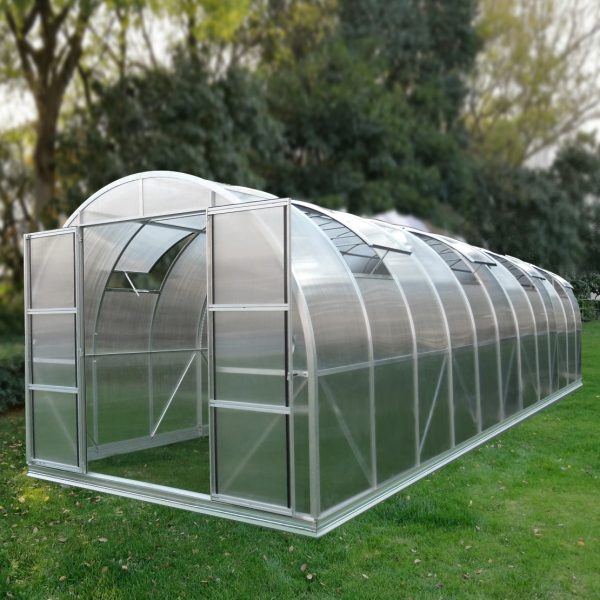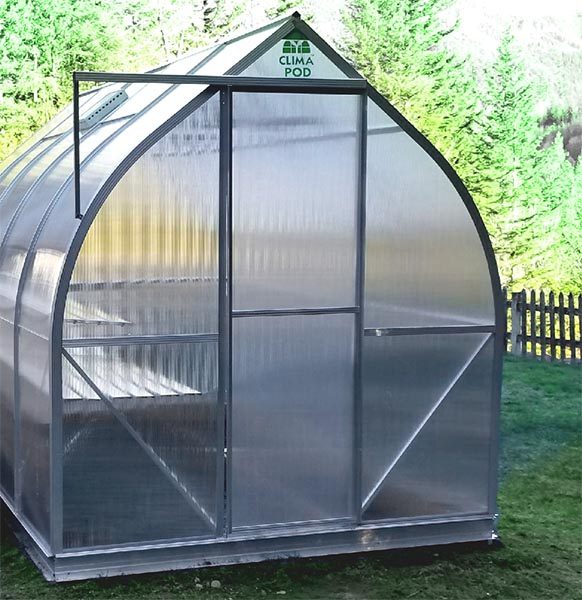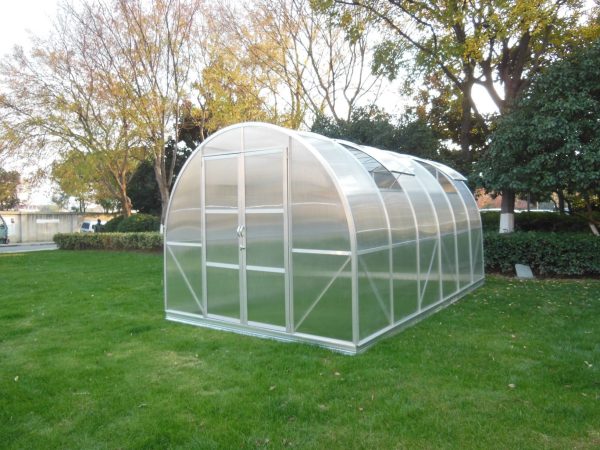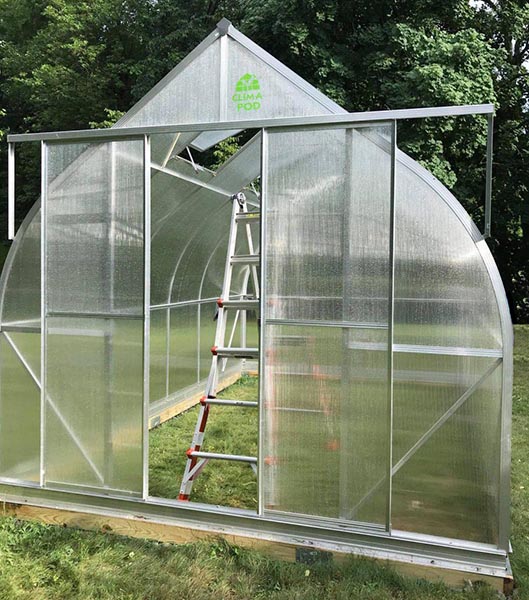Barrel drip irrigation: a guarantee of a rich harvest for many years
You need to properly water your greenhouse for proper plant growth and a guaranteed good harvest. Greenhouse drip irrigation from a barrel is the most acceptable option. You can purchase a ready-made irrigation system kit or assemble it yourself from ready-made components. In this article, we will give you recommendations for choosing the components of a drip irrigation system and the sequence of its installation.
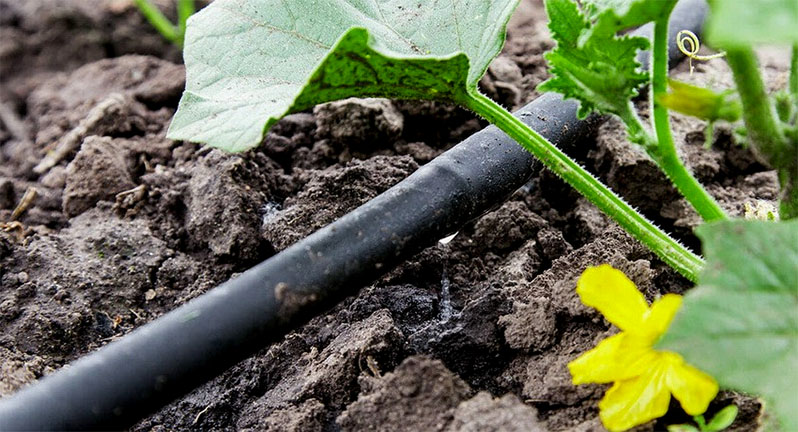
Greenhouse drip watering from a barrel: how the system works
Drip irrigation was first used in 1950 in Israel. There is a shortage of water in this area. Therefore, scientists tried to find a way to water plants with minimal water loss. As practice has shown, this irrigation option made it possible to save not only water, but also labor resources, and also contributed to an increase in yield by 30-40%.

For greenhouses, it is most advisable to organize a drip irrigation system from a barrel. It consists of a storage tank, a main pipeline and outlet hoses with droppers. To connect angles, tees, connections to a faucet, repair fittings, you will need fittings.
Note! The fewer fittings involved in the system, the higher the water pressure.
The principle of operation of such irrigation is as follows. A line is drained from the storage tank through the filter. Branch pipelines are attached to it, which are located along the entire length of the beds. They evenly along the entire product have holes with a diameter of 3-8 mm for droppers, through which the liquid seeps to the roots of plants. To create pressure, the container should be located at a certain height from 0.5-3 m. This ensures gravity irrigation. If the pressure is not enough, then you should install a submersible pump for drip irrigation from a barrel.

You can automate the system. The controller will allow you to turn on watering automatically at a certain time with the intensity that you need. In addition, setting several timers in some parts of the network will allow you to create a specific irrigation regime individually for each group of plants.
Advantages of a drip irrigation
Normal surface watering allows you to quickly saturate the soil with moisture no more than 10 cm deep. However, after some time, the surface layer of the earth dries up and becomes knocked down, which prevents the free flow of oxygen to the roots of plants. Drip irrigation gradually saturates the root system with moisture. This contributes to the growth of the roots and the maximum possible extraction of nutrients from the ground.
The rest of the soil near the plant remains dry, which eliminates the possibility of waterlogging and waterlogging of the soil. This has a beneficial effect on the health of green spaces, since diseases such as gray and white rot, powdery mildew, bacterial spot and black leg, which can kill plants, develop in a waterlogged environment.

Do-it-yourself drip irrigation of the greenhouse reduces the likelihood of plant burns that occur when moisture gets on the leaves. Small drops in such cases act as lenses through which the sun’s rays can leave burns on the surface of the leaves. Weeds will not receive moisture since your watering is directed exclusively to the root zone of your plants. This will slow down the growth of weeds. In addition, this system prevents soil erosion.
As numerous reviews prove, drip irrigation from a barrel for a greenhouse allows you to provide a sufficient supply of water, which makes it possible to irrigate in the absence of electricity for several days. You can use this system to apply fertilizer right under the roots of your plants. This will save you on fertilizer.
The water in the barrel is heated to ambient temperature. Therefore, plants will not experience stress when watering with cold water, which significantly slows down the growth of green spaces.
Disadvantages of drip irrigation system
When organizing a drip irrigation system in a greenhouse, it will be necessary to pay due attention to the implementation of constant monitoring. An excess of moisture that has arisen due to incorrect calculation will contribute to a significant waste of water and will be detrimental to plants. You should regularly check the barrel and fill it with water.
The disadvantages of the system also include the need for periodic cleaning of the holes, since, having a small diameter, they quickly become clogged. This is especially true for underground pipe laying. To clean the holes, flush and blow the system with a compressor. We don’t recommend to increase the diameter of the holes. The water will pour out at the beginning of the system and will not reach the last nozzle holes.
Note! To protect the drip irrigation system from contamination, install a filter at the outlet of the barrel or use a piece of foam rubber instead.
Recommendations for choosing a barrel
We chose a barrel as the source of water for the greenhouse irrigation system. The barrel must be of good quality and must hold a certain amount of water. The size of the tank directly depends on the total area of the greenhouse. Mostly for small greenhouses, a capacity of 200 liters is enough to provide the necessary supply of liquid.
The tank can be made of plastic, stainless steel or carbon steel. Plastic barrels are produced in various configurations and dimensions. Such products have low weight, sufficient strength, are not prone to corrosion, are easy to install and operate. Stainless steel tanks are durable (over 30 years) and highly resistant to corrosion. The material is not afraid of mechanical and aggressive influences. The main disadvantage of stainless steel tanks is the high cost of products.
Carbon steel tanks are the cheapest, but less durable. Products are heavy and need to be painted. The surface can corrode, which reduces the life of the tank.
You should choose the volume of the barrel based on the one-time flow of water that you need to water your green spaces. For cucumbers, you will need 2 l / h per bush, for tomatoes – 1.5 l / h with an interval of 1 time in 4 days. For cabbage and potatoes, 2.5 liters per plant per day will be enough. Based on the experience of the owners of the greenhouse, we can conclude that an average of 20 liters will be needed to irrigate 1 m² of territory.
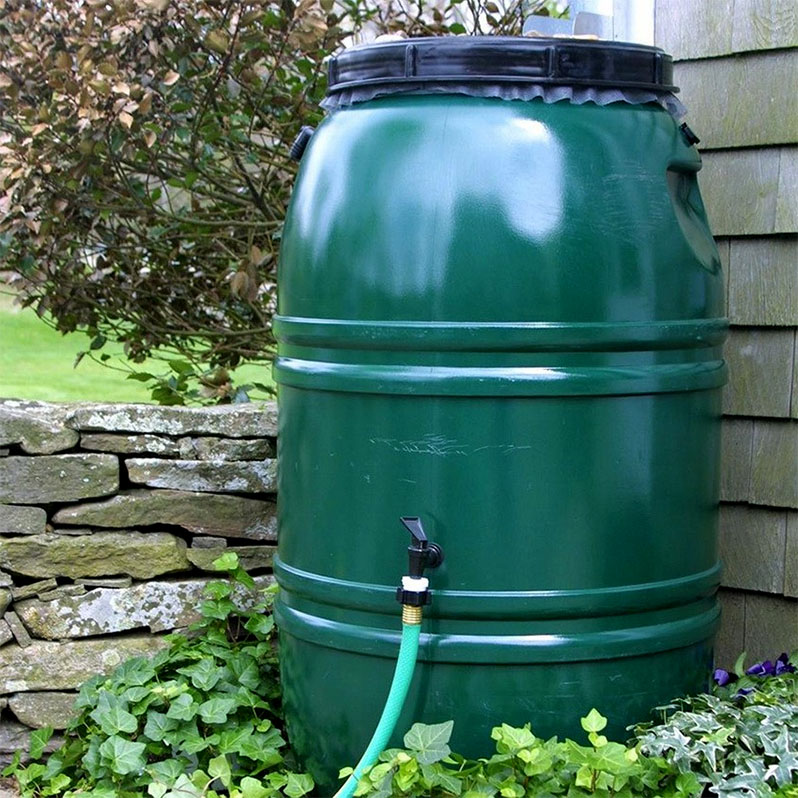
To create sufficient pressure in the system (at least 0.3 atm.), the barrel must be located at a certain height. The optimal distance is from 1 to 2 m. For this purpose, a stand made of a steel profile or a wooden beam should be provided for it. The most common option is a tripod welded from metal pipes. From wood you can build a powerful and stable stool.
Pay attention! Keep in mind that as the tank empties, the pressure in the network decreases.
Selecting the type of drip for a greenhouse watering system
Droppers are represented by devices with small tubes at the end of products. They cut into holes in a pipe or hose and regulate the amount of water supplied. There are several types of products. You can choose the right one based on the type of plants you grow and the dimensions of your greenhouse.
Droppers are of two types: compensated and non-compensated. The first option is equipped with a valve and a membrane. Thanks to this, water is dosed into the installation at different pressures. The devices are equipped with an anti-drainage system, so the pressure in them does not drop to zero when the water is turned off. When the system is switched on again, there is no start time delay due to air extrusion. We believe this option is more suitable for areas with elevation changes. The volume of water supplied by uncompensated devices at the beginning of the row will be greater than at the end.

Droppers are produced with manual adjustment or a fixed volume of water supply, which is indicated on the package. This value is in the range of 1-3 l/h. There are also spider-type models with dispensers that allow you to water several plants at once. These devices are the most expensive. They are located at a great distance from each other. It is advisable to use this system for watering perennial plants.
Note! When choosing droppers, you should pay attention to the possibility of disassembling the structure. Check that you can easily remove the cover. This is necessary so that you can clean the inside of the device.
We recommend installing droppers at a distance of 25-30 cm from each other. This step is the most preferred for most plants. However, for irrigation of root crops, the distance between droppers should be 20 cm, for melons – 1 m.
Do-it-yourself drip irrigation
Despite the numerous advantages of ready-made kits, many summer residents tend to independently assemble a drip irrigation system for a greenhouse. Such a solution will reduce financial costs and adjust the system to your needs and requirements.
To start building your drip irrigation system, you need to make a scheme. A competent and rational scheme of your site is the key to effective water consumption. It also eliminates the possibility of premature equipment failure. You need to put on the site plan all the objects, the trajectory of the movement of water and elevation changes. The irrigation scheme will depend on the type of plant, the size of the row spacing, the number and height of the rows. Based on the plan, you should calculate:
- the total length of the drip tape,
- the number of droppers,
- the number of L- and T-shaped branches,
- the number of plugs and fittings.
Note! We advise you to increase the length of the drip tape by 15-20% and the amount of consumables after you have calculated the required number of system components.
You need to determine how plants with different fluid requirements will be placed in order to correctly position the watering elements. Installation in this case can take place in separate zones.
When installing a barrel, one should take into account the source of its filling, which should be located nearby. Also, in the case of organizing automatic watering of the greenhouse with your own hands, powered by the network, you need to worry about the proximity of the device to the source of electricity.
Note! You can create a system for replenishing the water meter tank with rainwater from the roofs of buildings on the territory, which will save on water resources.
Do-it-yourself components for greenhouse drip watering
Before you irrigate the greenhouse, you should prepare all the components of the system. You should buy them based on the calculations you made using your watering scheme. The main elements of the do-it-yourself drip irrigation system in greenhouses are hoses or PVC pipes, the diameter of which should be 10-16 mm, which will ensure a slow flow of moisture to the plants. It is better to choose products that are opaque, since algae can grow in them as a result of exposure to sunlight.
We do not recommend the use of metal elements for this irrigation option. Small particles of rust can clog the dropper nozzles, which will disable the system. Fittings should be made only from virgin polyethylene, this is a guarantee of quality products. The recycled material will be susceptible to UV radiation and other aggressive factors.
You should install adjustable drippers on the outlets. You can adjust the tightening tightness with the pressure spring. With the help of the top cover, you can regulate the flow of water. You should use compensation type drippers if your greenhouse has a large slope.
You can purchase polyethylene drip tapes with built-in drippers. They look like a labyrinth through which water is directed to the root system of the plant. The thickness of the tapes is 0.127-0.381 mm. Their service life cannot exceed one season. You can use these tapes to water vegetables with a short growing season. For ordinary soils, products with a thickness of 0.2 mm are sufficient, and for rocky soils it is better to purchase tapes with a thickness of at least 0.25 mm.
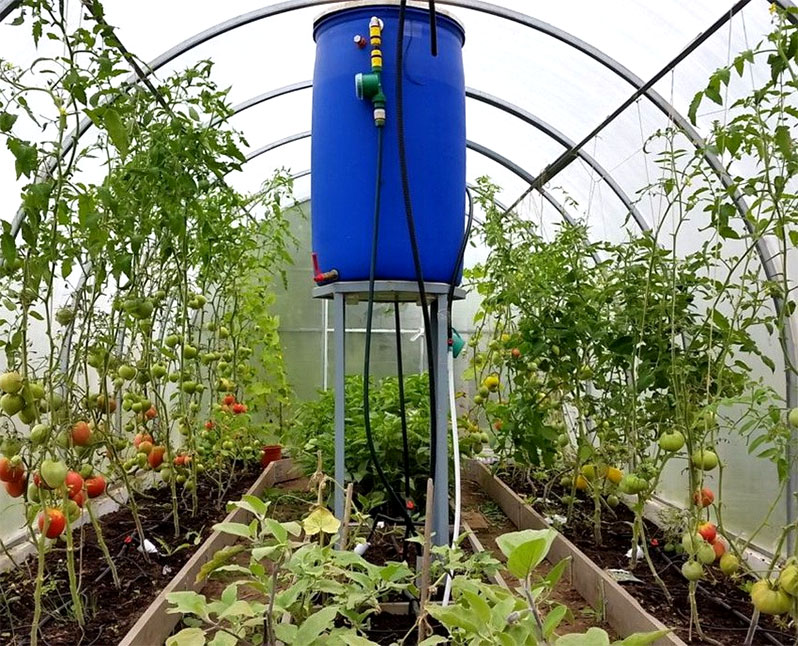
Drip pipes with external droppers are more durable and durable. The wall thickness varies from 0.9 to 1.2 mm. Such products withstand a pressure of 6 bar. To install droppers in pipes, it is necessary to make holes with a pitch of 30 cm.
In addition to irrigation and distribution pipes, you should purchase a tank with a capacity of at least 200 liters, a pump with a filter, stands for dropper dispensers, taps for adjusting the flow rate and shutting off the system in certain areas, tow or fum-tape for sealing connections, adapters , tees, couplings, plugs. To arrange automatic watering, you need a controller or a timer.
Do-it-yourself installation of a drip watering system
Do-it-yourself drip irrigation in a greenhouse begins with the installation of a barrel. You should place it at a height of at least 1.5 m. This requires the construction of a metal or wooden stand. If the container has a lid, it must be provided with mini-holes for oxygen to enter. You can cover the container with cheesecloth if you don’t have a container lid.
You can heat the water in the tank in two ways. The first way is exposure to direct sunlight. Or using a heating element located in the barrel. The second option will suit you if you pump water into the tank from a well.
Make a hole in the tank for installing a ball valve. For its installation, you will need a coupling and a seal. After the tap, install a coarse filter to protect the system from clogging. Next, you need to connect the main pipeline using branching fittings. Install the PVC outlet pipes with tees. The diameter of these pipes must be smaller than the main one. Using an awl or nail, make holes for installing droppers. Insert the droppers into the holes through the rubber seal.
If you use drip tapes, then you should make holes in the main pipeline for their connection using start fittings. The tape shows a line indicating the location of the sprinklers. Therefore, lay the system with a colored line up. Install plugs at the end of each branch. Use fum tape or tow to securely seal all joints. You can see the installation sequence on the video of drip irrigation in the greenhouse with your own hands.
The final step is to check the system. After supplying water, it is necessary to ensure that it evenly flows to each dropper, which will contribute to uniform soil moisture.

When installing an irrigation system in a greenhouse with your own hands, you can provide a feeding unit, which consists of an injector, a hose and a filter. Such an installation is essential for the implementation of plant nutrition in the greenhouse. You can buy this device in the store or make your own. The principle of operation of the mechanism is based on mixing fertilizer with water.
Automatic watering from a barrel
Using automation, you can mount the irrigation of greenhouses without your participation, which implies an uninterrupted supply of water at a specified time, for a certain duration and at the required interval. After you have installed the container and the filter, the feed assembly is complete. You can proceed with the installation of automation.
Automatic watering in a greenhouse involves the use of a timer or controller. The device is battery operated and controls the irrigation system. Watering starts and stops according to the selected program. Large greenhouses receive an automatic watering design with a high degree of automation. Such devices control the ambient temperature, soil moisture. The controller can be equipped with the function of accounting for the amount of liquid that has passed through it.
For drip irrigation from a barrel for a greenhouse, you can buy mechanical or electronic timer. The first type, working on a spring, creates a continuous supply of water up to 24 hours. For a while, you have to enter values manually. Electronic timers allow you to fully automate your irrigation system.
Helpful tips for long-term operation of drip irrigation
Despite the fact that the drip irrigation system has a simple design, it needs proper care, which is the key to durability. You should periodically clean the drain pipes with drippers from clogging. For the main pipeline, it is better to choose a plastic product, since the material does not corrode, leading to the appearance of small rust particles in the system, which will clog the drip holes. The same applies to the metal barrel.
You should equip the system with a filter, which is purchased with the kit. In extreme cases, you can use a piece of foam rubber by inserting it into the pipe coming out of the barrel. We recommend you to clean the filter once a week. The barrel must have a lid to prevent various debris from entering the water, which can cause a decrease in pressure in the system.
Even though a drip irrigation system uses plant fertilizers, you must first dilute them in water. We recommend flushing the system with clean water within 15 minutes after feeding.
In autumn, the water drains from the pipes. You should disassemble the system and store it indoors. Otherwise, the nozzles in the autumn-winter period will be completely clogged with dirt. Their cleaning will require your painstaking work.
Installing a drip irrigation system in a greenhouse from a barrel not only has a beneficial effect on the growth of plants. This design allows you to reduce water and ease the labor costs associated with the maintenance of the greenhouse. You can not only buy, but also perform home-made drip irrigation with your own hands in the greenhouse. To do this, you need to familiarize yourself with the features of the system and the rules for its installation.


